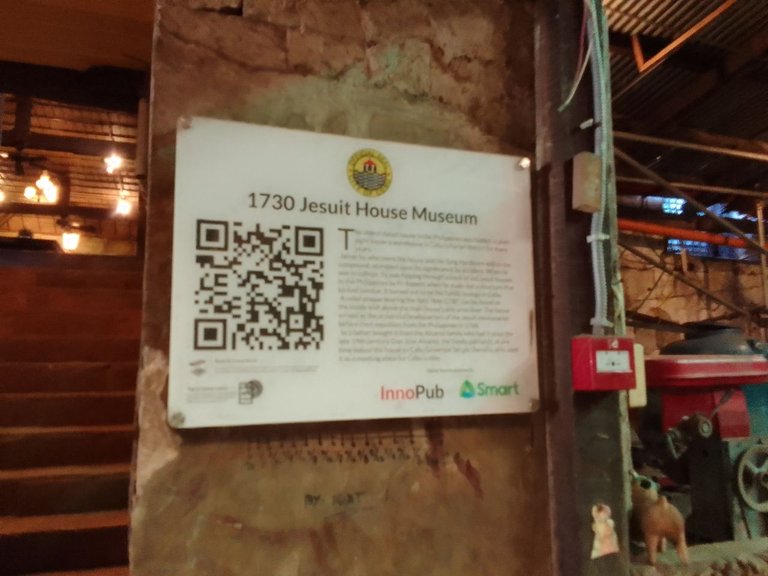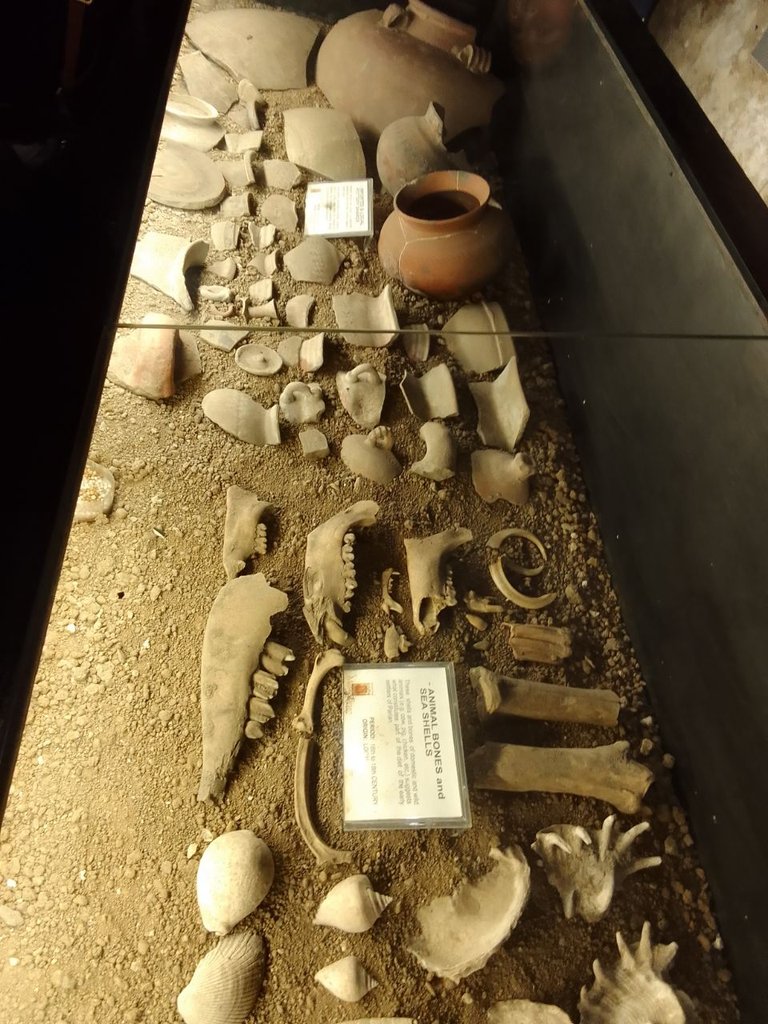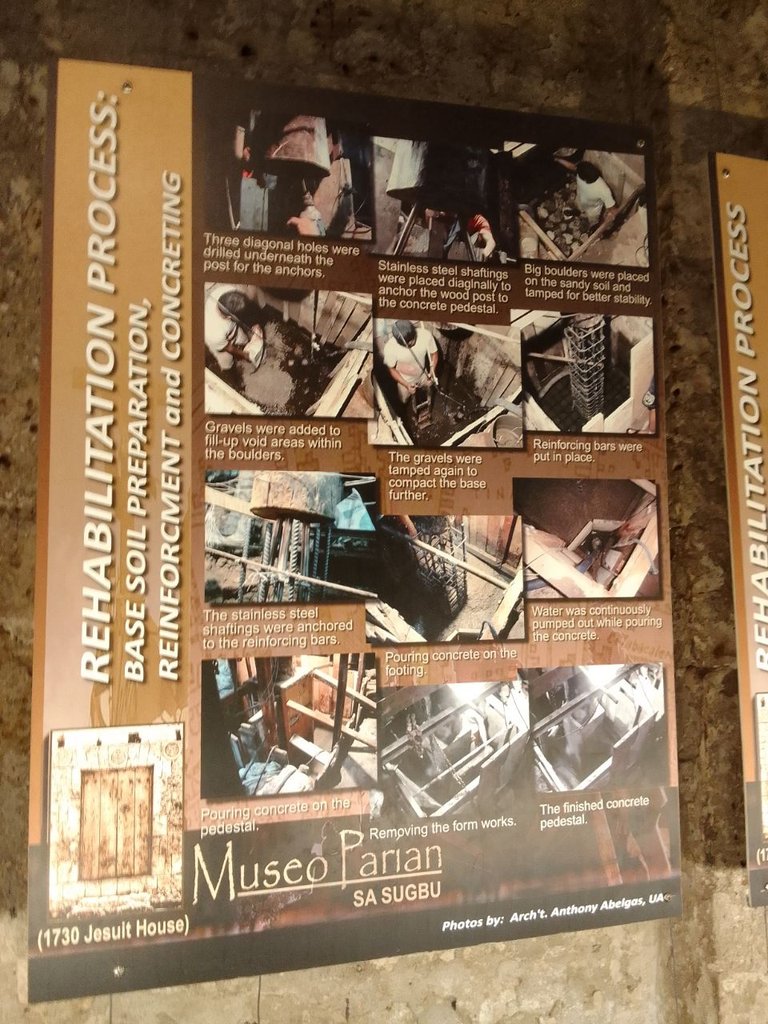
Of course, a visit would not be complete without tasting the delicious food here, especially the famous Lechon. And if you happen to be in Cebu during January, you can join the Sinulog Festival, one of the popular festivals in the Philippines. Aside from the tourist spots here in Cebu, what's more impressive are the beautiful and friendly people of Cebu.
Cebu is a place that is not only filled with beautiful landscapes, but also valuable lessons about its rich history. I am sure your visit will be worthwhile and unforgettable.
So, let's not wait any more time! Today, we will have a virtual tour to a hidden historical treasure. Believe me, it's literally hidden—because it's located inside a hardware. Come and join me as we explore the 1730 Jesuit House Museum, or better known as the Museo Parian sa Sugbo. It is a historic house recognized as the oldest documented house in the Philippines. I'm Fevy, and I'll be your FEVY-irtual tour guide for the day!
JESUIT HOUSE MUSEUM DETAILS
HOW TO GET THERE?
📍 Address: Zulueta St, Cebu City, Philippines
If you want to experience and learn the rich history of Cebu, visit the 1730 Jesuit House located in Parian, Cebu City. It is a historic house full of stories from the Spanish colonial era.
If you're from Mactan-Cebu International Airport, take a taxi and tell the driver to take you to the Jesuit House in Barangay Parian.
You can also book a ride using apps like Grab for a faster and more convenient ride.
If you are from the province of Cebu, you can ride a jeepney many jeepneys that pass through Colon Street near the Jesuit House.
For those who are already at Cebu and who love to walk and explore, it can also be reached as it's a walking distance to other tourist spots such as Magellan's Cross or Fort San Pedro. Just look for Zulueta Street in Barangay Parian.
WHEN TO VISIT
⏰ Operating Hours: 9:00 AM - 5:00 PM It's open every day, but my advice is that it's better to check their Facebook page in case of any changes.
HOW MUCH IT COSTS
💵 Entrance Fee: ₱50.00
For ₱50, you'll feel like you've traveled back in time. You can see traces of Spanish and Chinese influence while exploring this old house. You will also experience how life used to be in this type of home. Isn't it worth it? Besides being cheap, you'll also take home knowledge about Cebu's rich history and culture.
Tips for Visitors:
• Wear comfortable clothes and shoes because it is quite hot inside the house, especially it's located inside the warehouse.
• Bring a mini fan to keep cool.
• Don't forget to bring a camera or cellphone to capture the amazing artifacts and Spanish architecture there.

When I stepped out of the taxi, I immediately asked myself, “Where is the famous Jesuit House Museum here? All I see is a warehouse.” But as I looked around, I noticed an old house in the left corner of the warehouse. I was surprised to learn that the Jesuit House Museum is located here. Who would have thought that there's such a treasure hidden inside the warehouse? It's very different from the usual location of museums I've been to in Cebu City, like the Casa Gorordo Museum.
It is also known as the 1730 Jesuit House, because this is where the Jesuits first established a presence in 1730.

When you enter the house, you will immediately welcomed by a brief history of the house posted near the door. Since the photo I took is a bit blurry, I'll just share the text here:
"The oldest dated house in the Philippines was hidden in plain sight inside a warehouse in Cebu’s Parían district for many years. Jaime Sy, who owns the house and Ho Tong Hardware within the compound, stumbled upon its significance by accident. When he was in college, Sy was flipping through a book of old Jesuit houses in the Philippines by Fr. Repetti when he made out a structure that looked familiar. It turned out to be the family bodega (warehouse) in Cebu. A relief plaque bearing the date ‘Año 1730’ can be found on the inside wall above the main house’s entrance door. The house served as the provincial headquarters of the Jesuit missionaries before their expulsion from the Philippines in 1768. Sy’s father bought it from the Alvarez family who had it since the late 19th century. Don Jose Alvarez, the family patriarch, at one time leased the house to Cebu Governor Sergio Osmeña (later served as a President of the Philippines 1944-1946), who used it as a meeting place for Cebu’s elite.”
It's amazing how a house that dates back to 1730 still stands, hidden inside a warehouse. This unique experience gives an extra joy to each of my visits to places steeped in history. I discovered another best-kept secret in Cebu City—the Jesuit House Museum.

Let's start our tour in this two-story house on the ground floor. On the first floor, you'll see ancient maps of Cebu and the old face of Parian. You'll see a diorama and pictures of the Parian Church and the buildings surrounding it, including the Jesuit House. Sadly, according to the museum guide, the Parian Church was destroyed by order of Spanish priests due to the growing influence of Chinese Catholics. Parian was a designated area by the Spaniards for the Chinese residents and Chinese mestizos in Cebu. Today, the Jesuit House—a testament to Cebu's history strongly stands still in the Parian district of Cebu City.



One of the highlights here in the ground floor is the gallery of artifacts from the Ming Dynasty of China that tells the story of the prosperous trade between the Philippines and China before the arrival of the Spaniards. Artifacts include bones, shells, and wood that were once used to build the house.


Various types of ceramics can also be seen.



Another feature is the diorama of a Casco, a wide, shallow boat used in trade back then. Casco is important in transporting goods from the port to the commercial district of Parian and back.

Also on the ground floor, the story of Friar Andres de Urdaneta, OSA can be read. His successful voyage and the creation of the "Urdaneta's Route" allowed the trans-Pacific (Manila-Acapulco) galleon trade and the colonization of the Philippines by the Spaniards.


Also, the documentation of the rehabilitation of the Jesuit House can be seen in the ground floor. In these photos, you can see how the house has been restored.
The ground floor of the Jesuit House Museum is indeed a window to the rich history of Cebu, a testament to the relationship between the Philippines and China, and the influence of the Spanish in our country.
On the other hand, the second floor of the Jesuit House shows the living room, bedroom, along with the dining area where meals are shared.




I took pictures here in the living room first before going into the other rooms and sat on an antique chair with an antique mirror behind me. I really liked it because I felt like I was a woman in the past while I was there. I felt like an unica ija (only daughter) of a rich family in the past while I was sitting on it. Thanks to the museum guide for allowing me to sit on this chair and take pictures. In the living room, various pictures can also be seen on the wall.




There are also many antiques aside from the chair and mirror which can be seen in the house such as old tables, such as TV, an electric fan, radios, cameras, telephones, typewriters, as well as butaka which is a type of resting chair that is also used as a birthing bed. This is a proof of the practical lifestyle of the people back then.

On the second floor, there is also a bedroom with a special bed called Ah Tay. I couldn't believe it as I entered the room and I was deeply amazed when I saw the bed in person, I had only seen this bed before in historical movies. This bed was common in the past and maybe, your grandparents still have it. The Ah Tay bed is a well-known bed from the past with intricate carvings of fruits and vegetables. The bed is a matrimonial bed and has details on both the legs and headboard. The details above the bed are in the shape of a Grape which signifies fertility as it is a matrimonial bed. According to the museum guide, this bed was historically a favorite of wealthy families. Being a history buff, I wasted no time and took some photos in the room.
Then, in the dining area, we can see a large table made of Philippine ironwood. The design of the dining area is amazing, and I also took photos here because I was amazed by how it looks like. I imagined a family having a party here and sharing stories.





Moreover, there's a room in the house dedicated to San Pedro Calungsod, a Filipino saint martyred in Guam in 1672, making the Jesuit House extra special.

It's another day of learning! The whole day was filled with history and new knowledge. I was happy to visit the Jesuit House Museum, or also known as the Museo Parian sa Sugbo. Where I witnessed Cebu's heritage, Cebu's connection with the Chinese, and the Spanish influences. The things I learned about old Cebu were really fascinating.
What are you waiting for? Plan a trip with your family, friends, or life partners to also head to the oldest documented house in the Philippines—the Jesuit House Museum and learn more about Cebu's connection with the Chinese and see the Spanish influences. I'm sure you won't regret visiting here and you'll learn a lot about Cebu's colorful history.
That's all for tonight's virtual tour to the 1730 Jesuit House Museum, everyone. I'd really appreciate it if you could upvote, comment, and share my blog. Thank you so much, Hivers and have a fabulous night ahead!
[//]:# ([//]:# (!worldmappin 10.29867 lat 123.90404 long d3scr))

You can check out this post and your own profile on the map. Be part of the Worldmappin Community and join our Discord Channel to get in touch with other travelers, ask questions or just be updated on our latest features.
Thank you @worldmappin 💗
Hey @fevyulous you are welcome.
Thanks for using @worldmappin 😘
Wow, such a nice experience. I've heared about the place from my brother. Thank you for sharing this @fevyulous, it makes me wanna go to that museum. It looks like a classic house of Maria Clara.💗✨
Hope you get to visit there soon Ms. @marfeatures, you'll never regret it😻
Congratulations @fevyulous! You have completed the following achievement on the Hive blockchain And have been rewarded with New badge(s)
Your next target is to reach 3500 upvotes.
You can view your badges on your board and compare yourself to others in the Ranking
If you no longer want to receive notifications, reply to this comment with the word
STOPCheck out our last posts:
thank you @hivebuzz 💗
All good @fevyulous! You're amazing on Hive! Don't stop now, achieve that new goal!
It's amazing that the museum's entrance was hidden on a warehouse! Truly a secret coves of historical treasures💓
So glad you loved it @milesinverse! It's one of the things that makes this museum so unique. 😻
I think museums are one of the best places to honor the history, thank you so much for sharing such a knowledgeable and fun blog at the same time
You're welcome @xavierariz! I agree, museums are amazing for exploring the past. 😻
this is one of my fav. museum so far 😁
same @marieyanlab 😻
One of my fav museum in cebu😍
let's visit there again soon 😻
It seems like I also visited the museum just by reading your blog. Thanks for sharing this with us here, @fevyulous! 🥰
You're welcome Ms. @jeannmazing 😻
Hiya, @lizanomadsoul here, just swinging by to let you know that this post made it into our Honorable Mentions in Travel Digest #2410.
Your post has been manually curated by the @worldmappin team. If you like what we're doing, please drop by to check out all the rest of today's great posts and consider supporting other authors like yourself and us so we can keep the project going!
Become part of our travel community:
thank you @worldmappin
You are very welcome @fevyulous! it was well deserved. ☀️
Keep up the great work 💪
I was once there and yes together with the 3C SocStud😅